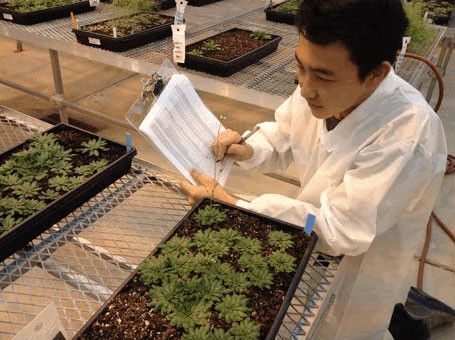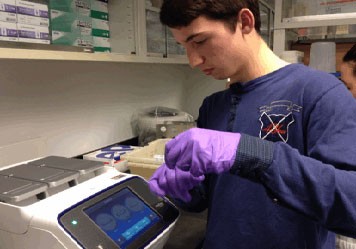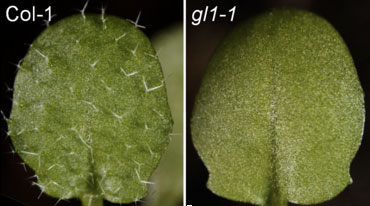The correlation between the GL1 gene and the glabrous phenotype in various arabidopsis ecotypes
Is the gl1-1 mutation the cause of the glabrous phenotype across all ecotypes?
Supervising teacher
Dr. Jelena Brkljacic and Diana Shin
Student
Nikolas and Henry W.
School
Upper Arlington, Columbus, Ohio
Supporting files
gl1-gene-mutation-research.pdf
sentences-for-soybean-council.pdf
Various arabidopsis plants were found to not have trichomes (plant hairs) and the reason was unknown. As trichomes assist with plant pathogenic defense, what would result in the plant losing this defense? Through previous papers it was possible to determine that the gene GL1 had an effect on the formation of trichomes. Also, a certain mutation (a 6.5 Kb deletion) may cause the disappearance of trichomes.

Thus, by running PCRs to try and find the deletion in the plants without trichomes, it was possible to see whether the plants in fact did have this mutation, which caused them to be glabrous (without trichomes). What we discovered was that, in fact, multiple of these plants were missing the GL1 gene, due to the deletion mutation and that the result was the absence of trichomes in the leaves of arabidopsis. Some were not missing the GL1 gene, however, which could lead to future research on other genes that affect the production of trichomes in plants. In the future, it would be possible to take these results and apply them to agricultural plants.


By either inserting the gene in a plant that lacks it or by amplifying a pre-existing gene that produces trichomes, it would be able to create more of this natural pesticide/insecticide, without all of the negative effects that an artificial pesticide may have. This would increase plant production by increased defense and it would also leave beneficial insects unharmed (i.e. bees-that could be harmed by artificial insecticides).